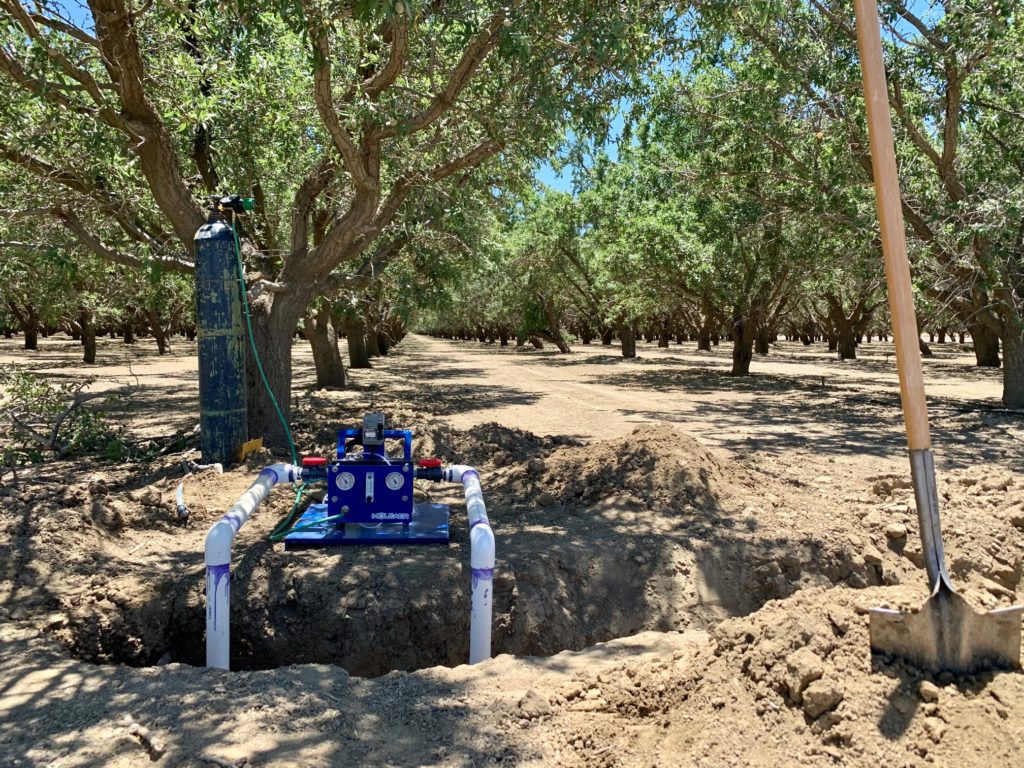
Summer 2021
Large problem, nano solution
There’s an angle to agtech that regularly catches people’s attention: how to do more with less. Less physical labor, less cost, less chemical input. Less water. As prime nut growing regions in the U.S. are facing water shortages and drastically reduced allocations, researchers, growers and industry as a whole are trying to find ways to mitigate the water problem. But one company is taking a different approach and looking at something very tiny as a remedy.
A nanobubble.
Moleaer Inc. has developed a technology that allows it to inject various gasses into several liquids for different process enhancement. In this case, it’s oxygen into irrigation water.
A solution for soil-based crops
Moleaer has been greatly involved in developments that treat irrigation waters for greenhouses, hydroponic operations and controlled environment agriculture in general. Its system has focused significantly on improved water quality that follows an elevated level of oxygen in the water, and also manages algae growth, which can be a problem in these systems.
Over the last year and a half, Moleaer has started exploring applications in soil-based crops. From citrus to avocados, cherries to nut trees, Moleaer is starting to see some interesting enhancements in the way that the system can alter infiltration rates of water with the introduction of nanobubbles.
“It’s essentially helping to change the capillary action of the way that water is moving through the soil,” said Warren Russell, co-founder and chief commercial officer at Molear.
There are three different ways in which Moleaer deploys the technology, and it depends on the type of irrigation. Reservoirs can be treated with nanobubbles, with costs ranging in proportion to how much water is being treated and how difficult it is to do so. Moving into the field with a more centralized option is an inline system that operates with existing pumping. Then, there’s a modular option that can be placed in a field and used to target specific areas with infiltration issues. Systems can be tailored to growers’ needs, which the costs reflect. On the lower end, modular systems work more for cost-conscious growers needing a fix for a targeted area, running around $10,000. On the other end are containerized systems with large-scale pump installations that utilize Moleaer’s core technology and require their own oxygen-producing capabilities, which can run over $100,000.
“Some people focus on nanobubbles, and that can use air,” Russell said. “Some people really want to promote oxygen levels because they may need disease suppression or a more beneficial nutrient regimen. There are different means to achieve different objectives.”
Some of the results of this have been reductions in soil compaction and better water infiltration rates as it moves through the soil column. Of particularly pertinent interest is the seriousness of the drought conditions in the states struggling with water.
“We were being approached by various growers looking at what other tools they could deploy to help with improving irrigation optimization, water uptake efficiency, and that’s where we see the biggest opportunity right now,” Russell said.
Moleaer has already done some work in Chile and Peru in avocado, cherry, mandarin and berry production, and just last year began work with a group with almond trees in California’s Central Valley. Continuing with almonds, they’ve also recently kicked off a pistachio project looking specifically at infiltration rates and soil compaction.
It has been exciting for Moleaer, with good market reception thus far and enormous growth potential in California. The openness to adopt such a tech serves as a testament to the value and benefits that growers are searching for and that Moleaer creates.
“Everybody is looking for improvement and enhancement in various ways,” Russell said of water optimization. “I think with where the cost of water is today, being able to provide value to reduce irrigation rates is the most important goal right now for us.”
What does this look like in terms of irrigation? It’s too early to say definitively. There’s no standardization just yet, and it’s still dependent on soil types and other factors. “We’re aiming for a 20-30% reduction,” said Russell of irrigation water use. “We think that’s fairly realistic or attainable. But, it’s too early to say how uniformly we can apply that as a baseline.”
Moleaer’s next steps are to echo the results in South America and bring the technology to California in a strong way. The company is currently undergoing the necessary commercial processes and partnering with distributors and large-scale growers interested in innovation to get wider adoption rolling throughout the industry. On the research side, Moleaer is continuing to focus on irrigation efficiency via in-ground sensors monitoring soil moisture levels and infiltration rates.
Like others involved in the industry, Russell recognizes that the cost of water is high and unsustainable. But it’s these more dire situations from which the innovation side of business is born, as is the requirement to look at things differently and be receptive to trying new things. Both Russell and Moleaer are excited to be a part of a long-term, sustainable solution.
“There’s no shortage of demand for solutions,” said Russell. “Providing an elegant, cost-effective and practical solution is what’s going to win the day.”







